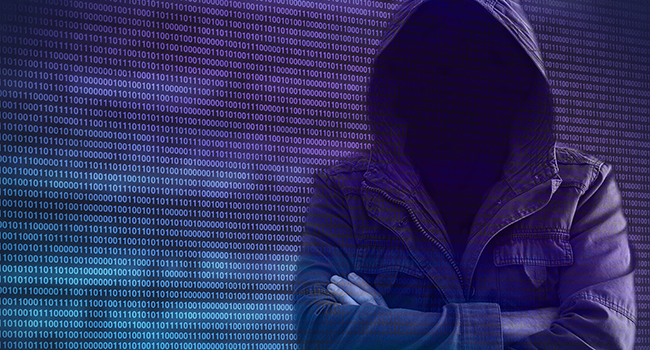
Data Breaches: Top Sectors of Interest in 2021
Cybercriminals have been a nuisance to businesses long before most readers of this blog would’ve gotten versed with the idea of online presence. The earliest data breaches trace their roots back to the 80’s —an era when the internet was sound tracked by a cacophony of digital hisses and beeps. The very first data breaches were probably acts of industrial espionage—motivated by gaining commercial benefits.
The curiosity around malicious viruses began growing around 1985. Few would remember when Ralf Berger, a German computer engineer, encouraged his peers to explore this new aspect of computer programming—during his keynote speech at Chaos Computer Club (currently, Europe’s most prominent hacker’s club).
Fast Forward to 2021
Stealing data is the modern gold rush. The new age connectedness and data-driven culture has had cyber pirates clawing and scratching at the enterprise data perimeter, hoping to uncover that one vulnerability that would let them in.
If that wasn't enough, the pandemic forced even the most reluctant businesses to put the pedal to the metal on digitization, leading to petabytes of additional data sprawl.
Data breaches in 2021 are as real as getting physically robbed. For the most part, these incidents are invisible—until they aren't.
The ‘Not So Usual” Suspects
So which sectors are at the forefront of such breaches? Which one needs maximum protection? Let’s find out if your business is one of them.
1. Healthcare
While the world was busy fending off the pandemic, the healthcare sector stealthily climbed its way up as the top contender for the most breached sector. An obvious question here can be—shouldn’t it be the finance sector?
For beginners, Personal Health Information (PHI) fetches much higher prices on the dark web and black market than credit card information or Personally Identifiable Information (PII).
According to Infosec Institute, while PII sells for $1-$2 on the black market, stolen patient health records can fetch up to $363 per record. Imagine getting a patient’s medical history and creating a fake insurance plan, some remedial device or medicine that promises a magical cure. There are so many potential scams that can be built around PHI. An ailing patient is the easiest and most vulnerable target for a cyber pirate.
The notion that hackers would only go after institutions associated with some sort of financial operation is false. Note that medical data has way more lasting value than financial information which can be changed if needed.
Most healthcare organizations focus on doing what they’re trained to do—saving lives. It’s hard for them to keep pace with the level of sophistication of modern-day attacks. Even regulatory compliances like The Health Insurance Portability and Accountability Act (HIPAA) addresses numerous patient privacy concerns but does not require encryption of people’s data.
2. Retail
2.14 billion—that’s the number of global users expected to buy online goods and services in 2021.
The rise in point-of-sale (POS) systems, e-commerce sites, and other store servers hosting large volumes of personally identifiable information (PII) and behavioral data—make retail a hotspot for potential data breaches.
Every time a card is swiped online or at a store, you end up sharing your address, zip code, debit/ credit card information, probably your birth date— and if a repeat buyer, probably your buying preferences and pattern too.
Retailers walk a thin line between meeting customer expectations, managing risk, and increasing operational efficiency. While creating personalized experiences using customer data can multiply the ROI by up to eight times—the consequences of a breach can be devastating. Almost a third of the regular consumers would avoid shopping for an extended period, while 19 percent would prefer to break ties permanently, in the event of a breach.
So, where do retailers begin? I’d say start with fortifying your payment systems—that’s where the real magic happens. Integrate point-to-point encryption and advanced tokenization to ensure when a card is swiped, no sensitive information is stored in the merchant’s environment. The database only holds tokens—meaningless scrambled letters.
Retail- 1 Hackers- 0
Needless to say, this is just the tip of the iceberg when it comes to all the savior tech available for retailers.
3. Finance
Given the quality and quantity of customer information the financial sector collects, I’d be surprised if it being on the list comes as a surprise to anyone.
A traditional practice amongst businesses operating in the financial space is that crucial information is often stored and shared across multiple, decentralized systems within large, widely interconnected groups. While this may be an operational requirement—it’s like chum in the water to circling cyber-sharks.
While financial institutions and banks should ideally be armed with sophisticated protection and a proactive posture to cybersecurity, recent research suggests that pretty much every mobile banking client contains exploitable vulnerabilities in their code.
In addition, financial organizations lean on multiple third-party vendors for introducing innovations, leveraging cloud services, and task delegation—raising significant concerns around data security and the level of penetration these vendors have into confidential data.
That explains why financial service firms fall prey to data breaches almost 300 times more frequently than other sectors.
On A Closing Note
A valid argument that often comes up is— ‘I’m cybersmart enough to not click on sketchy emails,’ and we concur. Having said that, if phishing didn’t work, it would have been a thing of the past by now. Which obviously isn’t the case.
Even if your business is heavily fortified and potentially impenetrable, the cyber pirates will divert their efforts towards infiltrating your supply chain partner, or probably your logistics partners—in a relentless pursuit to get in.
So, you have your task cut out for you.